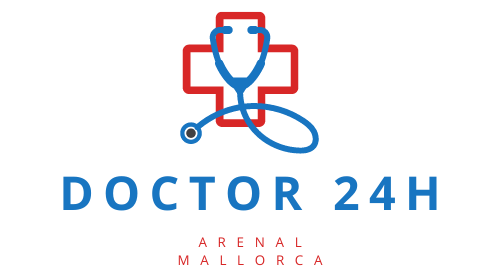When Is Acute Back Pain an Emergency
Acute back pain is a widespread condition, impacting thousands every day. While it is often not a cause for alarm, there are certain instances where it becomes an emergency situation.
Understanding the difference between typical discomfort and a genuine acute back pain emergency is crucial for ensuring timely and appropriate medical intervention.
When is back pain serious?
Most back pain episodes are due to muscle strain or other non-severe causes. However, when pain is accompanied by other specific signs, it’s time to take it seriously. Red-flag symptoms indicating serious underlying conditions should not be ignored, as they can point to serious health issues.
For example, if back pain is persistent and progressive, or if it is accompanied by fever, weight loss, or other systemic symptoms, it may be an indication of a more serious problem. Severe, sudden back pain that occurs with any form of trauma, such as a fall or a car accident, should also be immediately assessed by healthcare professionals.
Back pain that causes changes in bladder or bowel function, or numbness in the saddle area—the inner thighs, back of the legs, and area around the rectum—requires urgent medical attention as these could signal nerve damage.
What are the red flags for acute back pain?
Red flags in acute back pain are symptoms that suggest a higher risk of a serious underlying condition. These red flags generally include neurological impairment, such as numbness or weakness in the legs, severe or progressive neurological deficits, and unexplained weight loss.
Pain that does not improve with rest, or that is worse at night or with lying down, can be indicative of a more serious condition, such as an infection or malignancy. Equally, pain that radiates down one or both legs, especially if it extends below the knee, can be a sign of nerve compression.
Patients with a history of cancer, steroid use, IV drug use, or immunosuppression should also be evaluated with a higher index of suspicion for serious back pain causes.
How can you differentiate between muscular and neurological pain?
Muscular pain is often related to injury or tension and is characterized by a dull, aching sensation. It is usually localized and may get better or worse with movement or pressure. Neurological pain, on the other hand, is often sharp, shooting, or burning and may be associated with numbness or tingling.
Neurological back pain can also manifest as radiculopathy or sciatica, where the pain radiates from the back down into the legs. This type of pain typically suggests irritation or compression of a nerve root coming from the spinal column.
Pain patterns, physical examinations, and medical history play significant roles in differentiating between muscular and neurological pain. In some cases, imaging tests such as an MRI or CT scan may be necessary to determine the exact cause of the pain.
What emergency conditions are associated with back pain?
There are several conditions where back pain is a symptom of a medical emergency. Cauda equina syndrome is a critical condition where there is pressure on the nerves at the lower end of the spinal cord. Without prompt treatment, it can lead to permanent paralysis, loss of bowel or bladder control, and other serious issues.
An abdominal aortic aneurysm is a swollen area in the lower part of the aorta, the major blood vessel that supplies blood to the body. If an aneurysm bursts, it can cause life-threatening internal bleeding. Back pain that suddenly becomes severe and is felt deep in the side of the abdomen is a classic sign of this condition.
Vertebral osteomyelitis, an infection of the vertebral bones in the spine, is another emergency condition associated with back pain. This infection can lead to the destruction of bone, and without treatment, can cause severe pain and disability.
When should you seek help for acute back pain?
If you experience any of the red-flag symptoms previously mentioned, it’s essential to seek help for acute back pain immediately. Moreover, if back pain is severe and not improved with over-the-counter treatments, or if it’s associated with a high fever, it might be time to consult with a healthcare professional.
For individuals with a history of medical conditions such as osteoporosis, cancer, or recent trauma, back pain may warrant immediate medical attention to rule out related complications.
Remember, being vigilant about your symptoms and seeking timely help can prevent further complications.
What will they do in the emergency room for severe back pain?
Upon arriving at the emergency room, medical practitioners will perform a thorough assessment which includes a physical examination, medical history review, and possibly imaging tests like X-rays, MRIs, or CT scans to determine the cause of the severe back pain.
Treatment in the emergency room may involve pain relief medications, such as anti-inflammatories and muscle relaxants, and in more serious cases, immediate surgery or other interventions may be required.
Doctors may also administer intravenous fluids or antibiotics if an infection is suspected to be the cause of the back pain. The goal is to manage pain and address the root cause of the symptoms.
Acute back pain emergency: related questions
When is acute back pain an emergency?
Acute back pain becomes an emergency when it’s accompanied by symptoms such as loss of bowel or bladder control, severe weakness or numbness in the legs, unexplained weight loss, or fever. These symptoms may indicate a serious underlying condition that requires immediate medical attention.
Severe, sudden back pain after an injury or accident also requires urgent evaluation to rule out fractures or other serious injuries.
When should you go to A&E for back pain?
You should go to A&E for back pain if you experience severe pain that doesn’t improve with rest or medication, if you have significant trauma, or if you have any of the red-flag symptoms that suggest a more serious condition.
If your back pain is associated with chest pain, difficulty breathing, or loss of consciousness, these could signify life-threatening conditions like a heart attack or a severe allergic reaction.
What is a red flag for acute back pain?
A red flag for acute back pain is a warning sign that the back pain may be due to a serious medical condition. This includes issues such as neurological impairment, a history of cancer, unexplained fever, or recent significant trauma.
Other red flags include pain that is significantly worse at night or when lying down and pain that is persistent or progressive despite treatment.
When is back pain serious?
Back pain is serious when it is consistent and severe, occurs with systemic symptoms like fever or weight loss, or with neurological symptoms such as numbness, tingling, or weakness. Such conditions require a medical evaluation to determine the cause and appropriate treatment.
Other indicators include pain that does not improve with rest, is unaffected by position changes, or is associated with trauma.
If you’re experiencing severe back pain and are unsure about your symptoms, don’t delay in seeking help. The Doctor 24 Hours Arenal Mallorca clinic offers immediate care and expert advice to help manage your situation and relieve your pain. Contact them to ensure peace of mind and prompt treatment.

